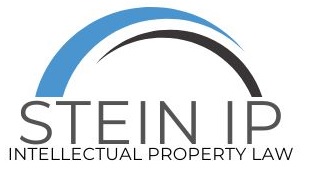- HOME
- > Blog Main Page
- > AI & PROTECTION: EXECUTIVE ORDER CALL AGENCIES TO REVISE THEIR AI GUIDELINES
AI & PROTECTION: EXECUTIVE ORDER CALL AGENCIES TO REVISE THEIR AI GUIDELINES
By Josue Rosario
The “AI EO”
On October 30, 2023, the Biden administration released an Executive Order addressing the use of AI and promoting the office’s goal of “safe, secure, and trustworthy development and use of artificial intelligence.” This is in response to the administration’s growing concern about the use and potential risks of AI.
This EO (Executive Order represents) a significant contribution to the subject of accountability in how AI is developed and deployed across organizations. Given the breadth of recommendations and actions provided, it is likely to influence organizations across all sectors of the economy, from the most mature AI implementers to first-time adopters. The Executive Order’s definition of AI systems is also broad; it is not limited to generative AI or systems leveraging neural networks but includes systems built over the last several years.
While the EO sets forth a few federal regulatory guidelines and focuses on bigger fish—such as already established AI giants like ChatGPT— it also has provisions impacting developers, deployers, and users of AI technologies. However, it also signals the possible implementation of AI in federal government agencies safely and securely, fostering the domestic development of AI tools and industries.
Eight principles or goals regarding the development and use of AI are outlined in section 2 of the EO. Specifically, responsibilities associated with the correct use, risk management, and growth of the AI industries. These eight key principles include:
1. Ensuring AI is safe, secure, and trustworthy.
2. Promoting innovation and competition in AI.
3. Supporting American workers and preventing harmful labor-force disruption.
4. Implementing AI policies consistent with equity and civil rights in a wide range of areas (criminal justice, government benefits, hiring, education, etc.)
5. Protecting American consumers of AI-related products or services.
6. Protecting American’s privacy.
7. Managing and ensuring effective use of AI in the U.S. government agencies.
8. Leading the competitive race of AI, making the United States the leader in advanced international development of AI.
What does it mean for IP law?
Biden’s EO finally provides a clear time frame by which the USPTO and Copyright Office should provide new guidance on how to manage AI in the realm of IP.
Some of the IP concerns attended in the EO were possible infringement on trained generative AI copyrighted content, whether the output of that copyrighted material is considered infringement, the level of human input required for generative AI work to be protected under IP laws, and if generative AI tools used to create art “in the style of” particular artist could be considered infringement.
Unfortunately, the EO has no clear solutions to those problems, but Biden’s EO calls to Keith Vidal, the Under Secretary of Commerce for Intellectual Property and the Director of the USPTO, to shed light on the role of AI technologies in patent inventorship. The order also instructs Vidal to consult with the Copyright Office to revise the current legal scope of protection for AI-generated and the use of original copyrighted work for AI training.
Section 5.2(c) of the EO does address some IP issues. Section 5.2(c)(iii) directs the U.S. Patent and Trademark Office (USPTO) Director to “within 270 days of the date of the order or 180 days after the United States Copyright Office of the Library of Congress publishes its forthcoming AI study” issue recommendations to the President, in consultation with the Director of the Copyright Office, on potential executive actions to be taken relating to copyright and AI. Sections I and II call on the USPTO Director to issue guidance to examiners on inventorship and AI within 120 days, and within 270 days, additional guidance on other issues, including patent eligibility and AI.
Under this new order, the USPTO is obliged to publish guidelines for the Office’s examiners and applicants on inventorship and the use of AI in the creative process. This stems from the 2022 case of Thaler v. Vidal where it was decided that AI and generative AI cannot be recognized as an inventor, as the law states that an inventor is an individual and is presumed to be a natural or legal person (35 U.S.C 100 (f)).
Furthermore, the EO mandates the Secretary of Homeland Security to assist AI developers by forming a risk mitigation program before April 2024. This is in remarks to President Biden’s goal for the United States to lead AI development and implementation.
The program will include the necessary personnel to address reports of AI-intellectual property theft, a new policy on sharing information, and guidance and resources to assist private sector companies with mitigating AI-related IP theft. The program will be a joint project between the DHS and the National Intellectual Property Rights Coordination Center and will also contribute to the Intellectual Property Enforcement Coordinator's Joint Strategic Plan on Intellectual Property Enforcement. The program will also promote broad collaboration and information sharing among various federal, state, and local government agencies, including the FBI and U.S. Customs and Border Protection, as well as international organizations, with the goal of creating a more unified front against AI-related IP theft.
Current landsacpe of IP and AI
Although there have been some AI and IP related cases in the past,
What to expect in the coming months?

TAGS:
RECENT POSTS
